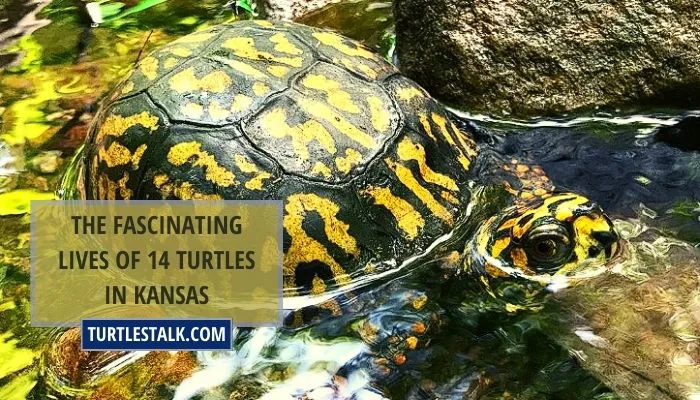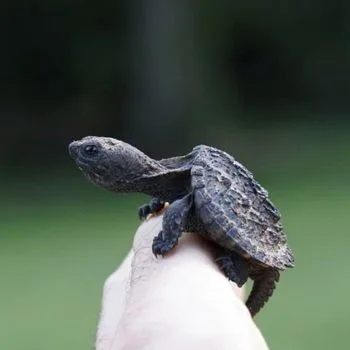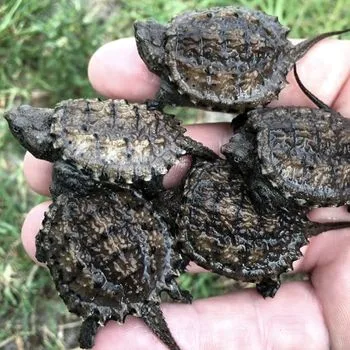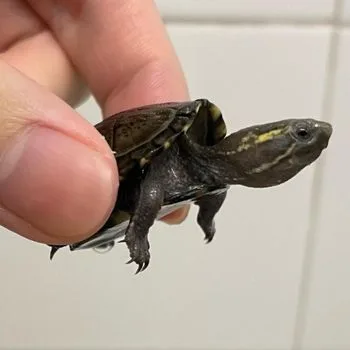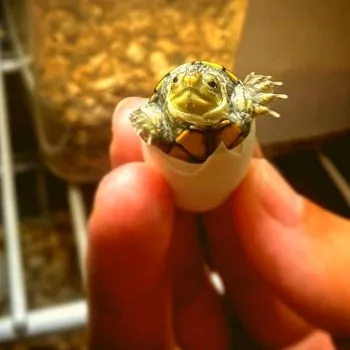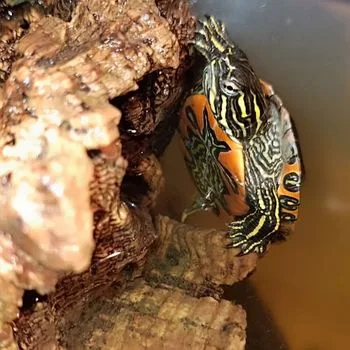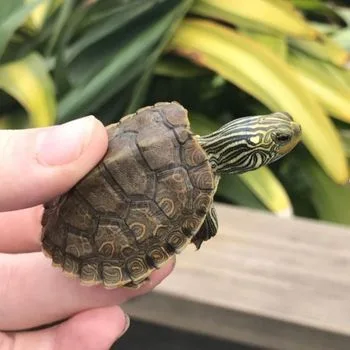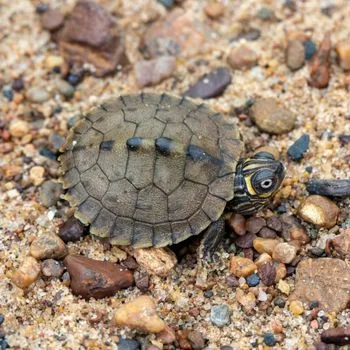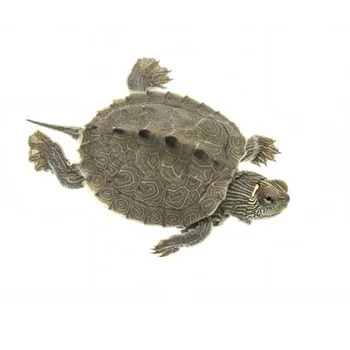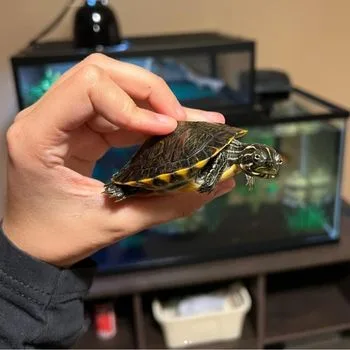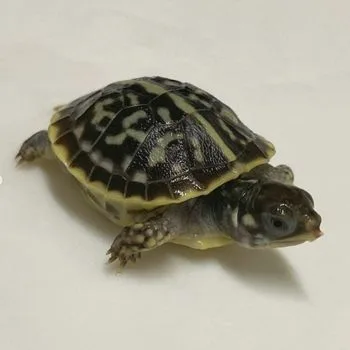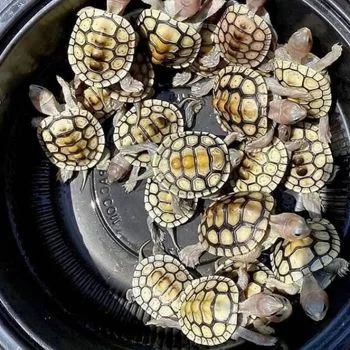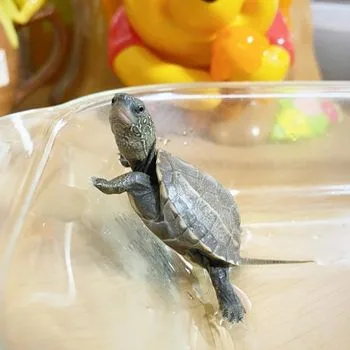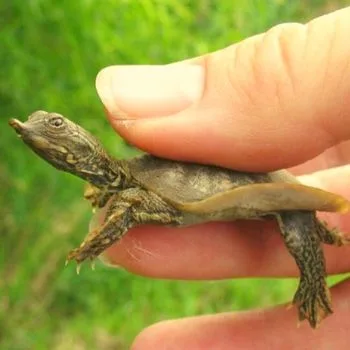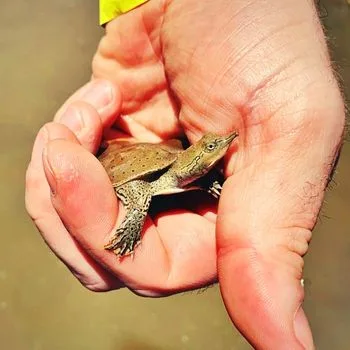The Fascinating Lives of 14 Turtles in Kansas
Turtles are an integral part of the Kansas ecosystem and have been around for millions of years, having evolved from reptiles. Here in Kansas, there are 14 turtle species that can be found across its diverse habitats – from swamps to meadows, rivers to sandhills.
These include the Common Snapping Turtle, Alligator Snapping Turtle, Common Musk Turtle, Yellow Mud Turtle and Painted Turtle among others.
The turtles here play a vital role in keeping their environment healthy by controlling insect populations as well as helping spread plant seeds throughout their habitat. They also provide food for other animals such as raccoons and otters who feed on them or their eggs. So come with me on this journey through the world of Turtles in Kansas!
| # | Name | Details | Image |
| 1 | Common Snapping Turtle (Chelydra serpentina) |
| 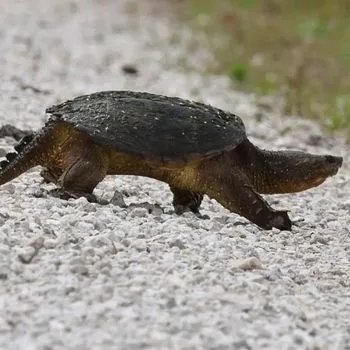 |
| 2 | Alligator Snapping Turtle (Macrochelys Temminckii) |
| 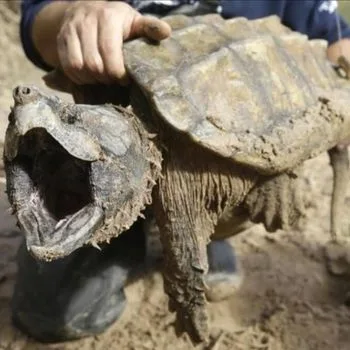 |
| 3 | Common Musk Turtle (Sternotherus Odoratus) |
| 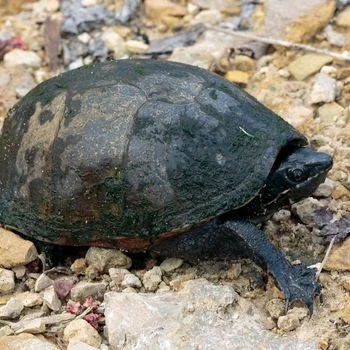 |
| 4 | Yellow Mud Turtle (Kinosternon Flavescens) |
| 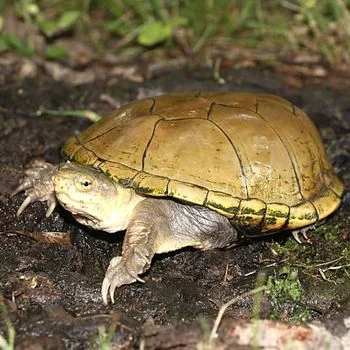 |
| 5 | Painted Turtle (Chrysemys picta) |
| 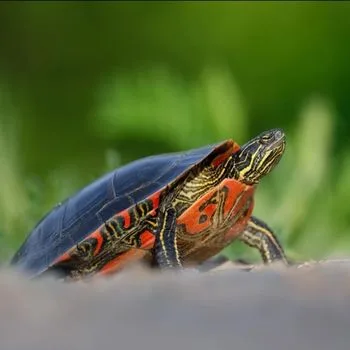 |
| 6 | Common Map Turtle (Graptemys Geographica) |
| 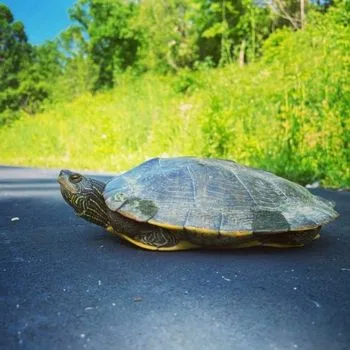 |
| 7 | Ouachita Map Turtle (Graptemys Ouachitensis) |
| 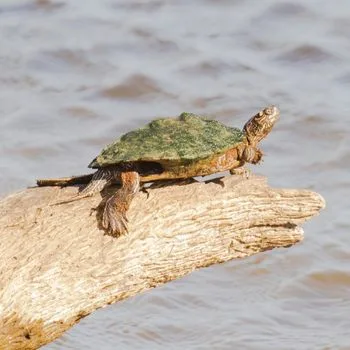 |
| 8 | False Map Turtle (Graptemys Pseudogeographica) |
| 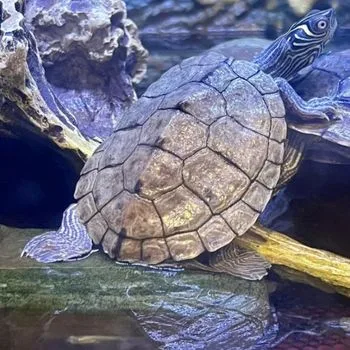 |
| 9 | River Cooter (Pseudemys Concinna) |
| 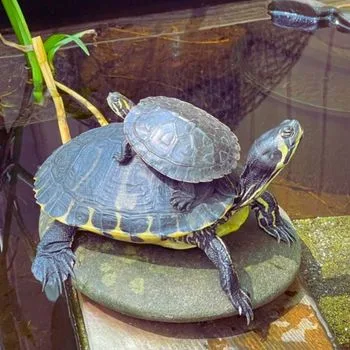 |
| 10 | Ornate Box Turtle (Terrapene Ornata Ornata) |
| 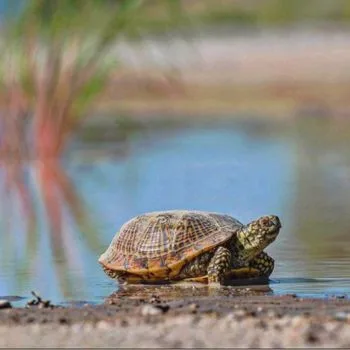 |
| 11 | Eastern Box Turtle (Terrapene Carolina) |
| 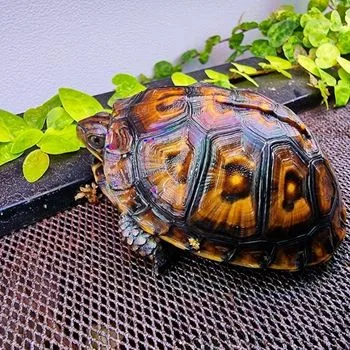 |
| 12 | Pond Slider (Trachemys Scripta) |
| 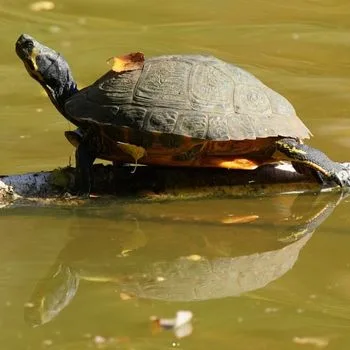 |
| 13 | Spiny Softshell Turtle (Apalone Spinifera) |
| 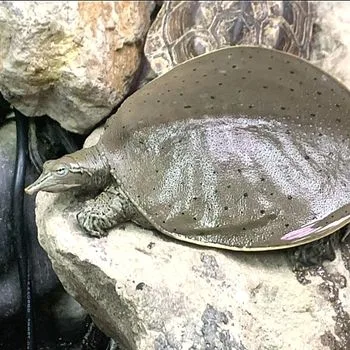 |
| 14 | Smooth Softshell Turtle (Apalone Mutica) |
| 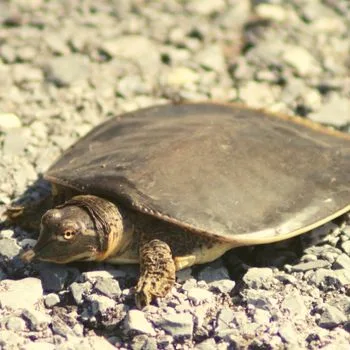 |
14 Turtles You Can Find in Kansas
In total, there are 14 species of turtles in the state of Kansas. This guide will take you on an exploration through each turtle type and provide tips for providing them with proper care. So, let’s get started on our journey into discovering all the wonders that these reptiles have to offer!
1. Common Snapping Turtle (Chelydra serpentina)
- Family: Chelydridae
- Genus: Chelydra
- Type: Freshwater turtle
- Natural Habitat: Freshwater habitats such as lakes, rivers, and swamps
- Lifespan: 50 years
- Maximum Size: 19 inches
- Maximum Weight: 40 pounds
- Prone to Diseases: Fungal infections and shell rot
- Aggression Level: Not aggressive until provoked
- Predators: River otters, bears and coyotes
- Domestication: Not recommended as pets
The Common Snapping Turtle, scientifically known as Chelydra serpentina, is an aquatic species native to freshwater habitats such as lakes, rivers and swamps. These turtles are highly adaptable and can live up to 50 years in the wild.
Adult Common Snapping Turtles typically measure 10-16 inches in shell length but can grow up to 19 inches and weigh around 40 pounds. They have a powerful bite with an estimated pressure of over 600 psi, making them one of the strongest biters among reptiles. Despite their strength they are generally not aggressive animals, though it is best to not provoke them and take caution around them.
Common Snapping Turtles often face threats from predators such as river otters, bears and coyotes when living out in the wild.
Unfortunately, their habitat is also threatened by human activities such as development and pollution which can lead to a decrease in population numbers if conservation efforts are not taken soon here in Kansas.
Although they make fascinating pets due to their long lifespan of up to 50 years when cared for properly, some states have regulations or restrictions on owning them so check with local authorities before acquiring this species as a pet.
These turtles have webbed feet for swimming and a long tail for propulsion allowing them to move quickly through water which also makes them difficult prey for predators.
Furthermore, although they occupy multiple states across North America from Alabama to Wyoming there is no other name than the Common Snapping Turtle so it’s easy to identify.
It should be noted that this species does not carry any significant disease that can be transmitted to humans yet they may still be prone to diseases like fungal infections or shell rot when kept in unsanitary conditions so proper care must be taken here in Kansas when considering owning one of these remarkable creatures as a pet.
2. Alligator Snapping Turtle (Macrochelys Temminckii)
- Family: Chelydridae
- Genus: Macrochelys
- Type: Freshwater turtle
- Natural Habitat: Slow-moving rivers, canals, lakes, and swamps in the southeastern united states
- Lifespan: 60-70 years
- Maximum Size: 30 inches
- Maximum Weight: 220 pounds
- Aggression Level: Moderate
- Predators: Large fish, birds of prey, and humans
- Domestication: Not recommended as pet
The Alligator Snapping Turtle (Macrochelys temminckii) is a large freshwater turtle native to the southeastern United States. Adults can reach up to 30 inches in length and weigh up to 220 pounds. Juvenile alligator snapping turtles are much smaller, usually between 4-10 inches in length. When you’ll come across this species in Kansas, you’ll notice that it has a very unique appearance, with an oversized head and a spiked tail that looks like an alligator’s claw.
The shell of this turtle is dark brown or black with yellow spots and stripes over it, giving the impression of scales on an alligator’s back.
Alligator snapping turtles are powerful predators and their bite force is strong enough to break through bone. They feed mainly on fish but also consume invertebrates, amphibians, and other turtles. These turtles are ambush predators, waiting for prey to come close before attacking. They are not considered aggressive towards humans but should still be handled with caution as they may bite if startled.
In the wild, alligator snapping turtles can live up to 60-70 years and have few natural predators due to their large size. However, their populations have declined in some areas due to habitat loss, illegal harvesting, and pollution. In order to protect this species from further decline, many states regulate or ban the possession of alligator snapping turtles as pets. Furthermore, it is important that you research the specific laws and regulations of your state or municipality before owning a pet turtle.
3. Common Musk Turtle (Sternotherus Odoratus)
- Family: Kinosternidae
- Genus: Sternotherus
- Type: Terrestrial and aquatic turtle
- Natural Habitat: Streams, rivers, ponds, and swamps in eastern north america
- Lifespan: 10-20 years
- Also Known As: Stinkpot
- Maximum Size: 4-8 inches
- Maximum Weight: 0.7 pounds
- Prone to Diseases: Respiratory infections and shell rot
- Aggression Level: Agressive but not known to bite humans
- Predators: Raccoons, mink, birds of prey, and large fish
- Domestication: Can be kept as pets
The Common Musk Turtle (Sternotherus Odoratus) is a terrestrial and aquatic turtle found in streams, rivers, ponds, and swamps throughout the eastern United States. This species can reach an impressive length of 4-8 inches when fully grown, with an average weight of 0.7 pounds. Interestingly, these turtles are also known as ‘Stinkpots’ due to their ability to secrete a musky odour when alarmed or threatened.
Their flat carapace makes them well adapted for life in the water, with strong webbed feet and sharp claws helping them cling onto rocks or vegetation while searching for food. As omnivores they feed on snails, clams and other insects as well as plant matter such as algae and leaves – making them a vital part of the local ecosystem here in Kansas. They are generally non-aggressive but may bite if disturbed or threatened by predators such as river otters, raccoons, mink and birds of prey.
The Common Musk Turtle is not currently listed as an endangered species but habitat loss due to human activities such as development and pollution can lead to a decrease in population numbers – especially without proper conservation efforts. Additionally, illegal pet trade can be an issue that affects their vulnerability so it’s important to check local regulations before acquiring this species as a pet.
Despite all this however, with proper care these turtles have been known to live up to 20 years making them great companions for experienced keepers who are willing to put in the effort necessary for their special care needs here in Kansas.
4. Yellow Mud Turtle (Kinosternon Flavescens)
- Family: Kinosternidae
- Genus: Kinosternon
- Type: Freshwater turtle
- Natural Habitat: Found in habitats ranging from slow-moving rivers to permanent ponds, including floodplain swamps and seasonal wetlands.
- Lifespan: 20 – 30+ years
- Maximum Size: 5 – 12 inches
- Maximum Weight: 10 – 35 pounds
- Prone to Diseases: Shell disease
- Disease Carrier: Salmonella
- Aggression Level: Not aggressive
- Predators: Raccoons, alligators
- Domestication: Can be kept as pets
The Yellow Mud Turtle (Kinosternon flavescens) is a remarkable creature, found in habitats ranging from slow-moving rivers to permanent ponds. This freshwater turtle is typically 5 to 12 inches long and can live up to 30 plus years! It has an interesting yellowish shell with black markings on its upper carapace that sometimes feature red or orange hues along the edges; making it stand out among other species of turtles.
Yellow mud turtles are not aggressive creatures, preferring solitude apart from mating season when we often find several males competing for the same female. These reptiles have many predators such as raccoons and alligators who prey on them easily due to their small size and lack of protection against enemies.
Sadly, this species faces endangerment in Kansas due largely to destruction of its habitats which require conservation efforts if we wish future generations will enjoy seeing Yellow Mud Turtles back thriving in nature just like today!
5. Painted Turtle (Chrysemys picta)
- Family: Emydidae
- Genus: Chrysemys
- Type: Aquatic turtle
- Natural Habitat: Rivers, streams, and large ponds in the northern united states
- Lifespan: 20 – 30 years
- Maximum Size: Males: can reach up to 5.5 – 6 inches, females: 5 – 10 inches
- Maximum Weight: Males: roughly 300 gm, females: on avg 500 gm
- Prone to Diseases: Shell infections
- Disease Carrier: Salmonella
- Aggression Level: Not aggressive
- Predators: Raccoons, skunks, foxes, herons, other birds, snakes, and large predaceous fish
Have you ever wanted to own a beautiful and unique pet? The Painted Turtle (Chrysemys picta) may just be the perfect fit for you!
Native to North America, this semi-aquatic reptile lives in Kansas’s rivers, lakes, marshes and ponds. The carapace length of these turtles ranges from 4-10 inches long with females being larger than males.
With proper care and clean living conditions, they have an average lifespan of 20-30 years – making them great companion animals for your family or even as solo pets. Just make sure to check what regulations there are in Kansas so that you can give your pet painted turtle the best life possible!
6. Common Map Turtle (Graptemys Geographica)
- Family: Emydidae
- Genus: Graptemys
- Type: Aquatic turtle
- Natural Habitat: Freshwater rivers, streams, and ponds in the eastern united states
- Lifespan: 20 years
- Also Known As: Map turtle, northern map turtle
- Maximum Size: 8-10 inches
- Maximum Weight: 1-2 pounds
- Prone to Diseases: Respiratory infections and shell rot
- Aggression Level: Not aggressive
- Predators: Otters, raccoons, birds of prey, and large fish
- Domestication: Can be kept as pets
Deep in the freshwater rivers, streams and ponds of the eastern United States lies a remarkable species of turtle – the Common Map Turtle (Graptemys geographica). This species is part of the Emydidae family, and is well-adapted to aquatic life, boasting powerful webbed feet, a long neck and flat shell for swimming. Adults can grow up to 8-10 inches in length with little size variation between males and females, ranging from 1 to 2 pounds in weight.
The Common Map Turtle is often confused with other members of its genus; however, it can be easily identified by its unique pattern of yellow lines that resemble a map on its shell. Its lifespan can reach up to 20 years when kept in proper conditions. It’s important to note that this species is illegal to own as a pet in some states due to varying regulations; therefore it’s essential to check your local state laws before attempting ownership.
These turtles may not be aggressive by nature but they may bite if threatened or disturbed. They are also prone to diseases such as respiratory infections and shell rot if kept in unsanitary conditions – so it’s important to take special care when handling them if you decide to keep them as pets.
As far as predators go, otters, raccoons, birds of prey and large fish all pose a threat despite their adaptations for aquatic life. Thankfully, there are no signs that this magnificent species is currently endangered here in Kansas.
7. Ouachita Map Turtle (Graptemys Ouachitensis)
- Family: Emydidae
- Genus: Graptemys
- Type: Aquatic turtle
- Natural Habitat: Slow-moving freshwater rivers, streams, and lakes
- Lifespan: 30 – 50 years
- Also Known As: Sawback
- Maximum Size: Males: 3 to 6.5 inches, females: 4.0 to roughly 11 inches
- Maximum Weight: 1.5 – 4.5 pounds
- Prone to Diseases: Shell rot, respiratory infections
- Disease Carrier: Salmonella
- Aggression Level: Not aggressive
- Predators: Raccoons, skunks, and foxes
- Domestication: Can be kept as pet
Have you ever seen the magnificent Ouachita Map Turtle (Graptemys ouachitensis)? This freshwater turtle is found in slow-moving rivers, streams, and oxbow lakes in Arkansas and Oklahoma.
With adult sizes measuring 8-11 inches in length, these turtles make for a great pet – though it’s important to check local regulations as Kansas may have different restrictions when it comes to owning a turtle.
They are not aggressive by nature but can fall prey to predators like raccoons and otters or even large fish or birds of prey on occasion. When cared for properly, these turtles can live up to 20-30 years!
8. False Map Turtle (Graptemys Pseudogeographica)
- Family: Emydidae
- Genus: Graptemys
- Type: Freshwater turtle
- Natural Habitat: Large rivers, lakes and backwaters of the mississippi river system
- Lifespan: 10 to 20 years
- Maximum Size: Females 8-10 inches; males reach 4-6 inches
- Maximum Weight: Females 4 lbs; males 0.8 lbs
- Prone to Diseases: Respiratory infections, shell rot, and other health issues
- Aggression Level: Low
- Predators: Birds of prey, raccoons, and other large mammals
- Domestication: Can be kept as pets
False Map Turtles are freshwater turtles native to the large rivers, lakes and backwaters of the Mississippi River system. Males grow up to 6 inches in length and can weigh up to 0.8lbs, while females typically reach 8-10 inches in size and weigh 4 lbs.
This species is well adapted for aquatic life – with a streamlined shell and strong legs for swimming, they are graceful swimmers. Best known for their intricate map-like shell patterning, these turtles have relatively low levels of aggression so can be kept as pets under supervision with proper care and nutrition.
Despite not being considered endangered yet, we must protect False Map Turtle habitats throughout Kansas before populations decline further due to habitat loss or collection for the pet trade!
9. River Cooter (Pseudemys Concinna)
- Family: Emydidae
- Genus: Pseudemys
- Type: Aquatic turtle
- Natural Habitat: Large rivers, ponds, lakes, wetlands
- Lifespan: Can live up to 40 years
- Also Known As: Kuta
- Maximum Size: 9 inches to 12 inches
- Maximum Weight: 8 – 12 pounds
- Prone to Diseases: Shell rots, metabolic bone issues, and parasitic infections
- Aggression Level: Not aggressive
- Predators: Raccoons, skunks, and foxes
- Domestication: Can be kept as pet
Welcome to the exotic world of the River Cooter (Pseudemys concinna)! This large aquatic turtle can be found in Kansas and other southeastern United States. Males typically reach 15 inches in carapace length but females are larger, weighing up to 20 pounds when fully grown. These turtles have adapted well to their aquatic lifestyle with streamlined shells for efficient movement underwater and webbed feet that help them swim quickly.
While they are not naturally aggressive, they may bite if provoked – so please keep this in mind while observing them out there! It is possible to keep River Cooters as pets with proper care such as regular cleaning of their enclosure and adequate humidity levels. Let’s join together for conserving these beautiful creatures for future generations to experience!
10. Ornate Box Turtle (Terrapene Ornata Ornata)
- Family: Emydidae
- Genus: Terrapene
- Type: Terrestrial turtle
- Natural Habitat: Open landscapes such as pastures, prairies, and lightly forested areas
- Lifespan: 30 – 40 years
- Also Known As: Western box turtle
- Maximum Size: 4-5 inches
- Maximum Weight: 1-1.5 pounds
- Prone to Diseases: Vitamin deficiency, respiratory diseases
- Disease Carrier: Salmonella
- Aggression Level: Males display a tendency towards aggressive behavior, including biting and clashing their shells against each other
- Predators: Birds, such as crows, raptors, and ravens; domestic cats and dogs; opossums; raccoons; skunks; snakes; and even adult box turtles
- Domestication: Can be kept as pet
Have you ever wondered what kind of magical creature might be lurking in the forests and wetlands of Kansas? Well, say hello to the Ornate Box Turtle! This amazing animal is closely related to its box turtle cousins, but it can also be identified by its intricate patterned shell – hence its name.
With a small head and body covered in an ornately patterned carapace or upper shell that’s usually brown with yellowish-orange markings, these turtles stand out from the crowd.
It spends most of its time hiding under cover while searching for food such as snails and insects, often seen out on warm summer days. So next time you take a walk through Kansas, keep your eyes open for the Ornate Box Turtle – after all, who knows what else might be living there!
11. Eastern Box Turtle (Terrapene Carolina)
- Family: Emydidae
- Genus: Terrapene
- Type: Terrestrial turtle
- Natural Habitat: Deciduous and mixed forests, meadows, and fields
- Lifespan: 60 years
- Also Known As: Eastern terrapin
- Maximum Size: 4-10 inches
- Maximum Weight: Male: 1 pounds, females: 2 pounds
- Prone to Diseases: Respiratory infections, shell rot, and other diseases
- Aggression Level: Not aggressive towards humans
- Predators: Raccoons, skunks, opossums, and snakes
- Domestication: Can be kept as pets
The Eastern Box Turtle (Terrapene Carolina) is one of the most intriguing species found in deciduous and mixed forests, meadows, and fields of eastern North America. This incredible turtle can live up to 40 years in the wild or even reach up to 60 years in captivity! With adult sizes ranging from 4-10 inches, males being slightly smaller than females with a weight of 0.5-1 lb for males and 1-2 lbs for females.
Eastern Box Turtles are not too aggressive towards humans but potential predators may include raccoons, skunks, opossums, and snakes. They can be kept as pets but it is important to consult local laws before doing so since some states make it illegal to collect wild turtles or sell them as pets—including Kansas. Captive Eastern Box Turtles may be prone to respiratory infections, shell rot, and other diseases common to captive turtles.
This species is state-protected in several states due to the declining population caused by habitat loss and illegal collection for the pet trade. Despite this precarious situation, Eastern Box Turtles can still be found in eastern North America—including Kansas. It is essential that we take steps to protect this species which calls Kansas home by preserving their natural habitats as well as improving public awareness of their plight!
12. Pond Slider (Trachemys Scripta)
- Family: Emydidae
- Genus: Trachemys
- Type: Aquatic turtle
- Natural Habitat: Rivers, ponds, and creeks
- Lifespan: 20 – 30 years
- Also Known As: Slider turtles
- Maximum Size: 3 inches – roughly 15 inches
- Maximum Weight: Apporximately 6+ pounds
- Prone to Diseases: Vitamin deficiency, respiratory diseases
- Disease Carrier: Salmonella, different germs and bugs
- Aggression Level: Not aggressive
- Predators: Raccoons, skunk, fox, wading birds
- Domestication: Popularly kept as pets
The majestic and beautiful Pond Slider— native to wetlands, ponds, lakes and slow-moving streams in Kansas— is a sight worth beholding. Reaching up to 11-12 inches in length with males being smaller than females, this reptile turtle species carries quite the presence, yet it remains relatively non-aggressive and may only bite when feeling threatened.
Its webbed feet make it well adapted for life in an aquatic environment – allowing them to hold their breath for long periods of time as they explore their surroundings.
Sadly however, wild populations can be impacted by habitat loss or illegal hunting activities which makes us all the more responsible for respecting these amazing creatures who have been gracing our waters since time immemorial.
With proper care from a loving family home they can live up to 20 years but due to its highly adaptive nature there is no need worry about illegal petting laws here in Kansas. All we ask is that human intervention does not harm the wondrous pond slider population any further!
13. Spiny Softshell Turtle (Apalone Spinifera)
- Family: Trionychidae
- Genus: Apalone
- Type: Freshwater turtle
- Natural Habitat: Predominantly discovered in rivers and lakes, can also be found in nearby creek beds and smaller water bodies such as ditches and ponds.
- Lifespan: 40+ years
- Also Known As: Spinifera (spine-bearing), spiny
- Maximum Size: 8 – 20+ inches
- Maximum Weight: 25 pounds
- Prone to Diseases: Vitamin deficiencies, metabolic bone disease, and intestinal parasites
- Disease Carrier: Foodborne infections, vibrio cholerae
- Aggression Level: Aggressive when threatened
- Predators: Raccoons, skunks, and foxes frequently disrupt the nesting sites of spiny softshell turtles. while young softshell turtles face predation from raccoons, herons, and big fish, adult turtles mainly fall victim to human hunting and lack significant natural predators.
- Domestication: Cane be kept as pets
The Spiny Softshell Turtle (Apalone Spinifera) is a species of freshwater turtle found in the rivers, streams and lakes across Kansas. They are an impressive creature with adults reaching 8-14 inches in length and males weighing up to 3 pounds while females can reach up to 8 pounds. These turtles have remarkable adaptations such as webbed feet, streamline shells and long snorkel like nasal tubes for breathing underwater.
Unfortunately, some populations of these beautiful creatures may be declining due to rapid habitat loss or exploitation but luckily they are not currently listed as endangered species – yet.
When given proper care, maintenance and facilities these turtles can make great pets; however it’s best practice to always check with local authorities first because it might be illegal from state to state. They are usually quite gentle but can become aggressive when feeling threatened or cornered so it’s crucial for their owners to educate themselves about how best handle them correctly.
By taking the necessary steps we can ensure that this amazing species will continue to thrive!
14. Smooth Softshell Turtle (Apalone Mutica)
- Family: Trionychidae
- Genus: Apalone
- Type: Mud turtle
- Natural Habitat: Marshes, streams, drainage ditches, and occasionally ponds.
- Lifespan: 10 to 20 years
- Also Known As: American softshell turtles
- Maximum Size: Males: 4 – 7 inches, females: 7 – 12+ inches
- Maximum Weight: 40+ pounds
- Prone to Diseases: Metabolic bone disease
- Disease Carrier: Foodborne infections, vibrio cholerae
- Aggression Level: Aggressive
- Predators: Turtle eggs are a food source for birds such as racoons and red foxes, as well as bears. younger turtles are prey for large fish and other turtles, as well as mammals like the skunk and armadillo. alligators are the main danger to adult turtles.
- Domestication: Can be kept as pets
The Smooth Softshell Turtle (Apalone mutica), is an aquatic species of turtle found across parts of the United States, including Kansas, Mississippi River valley, Great Lakes region and mid-Atlantic states. With a carapace length making them among the largest freshwater turtles in North America – they range from 4 to 8 inches in size when young but can grow up to 28 inches long and weigh up to 20 pounds as adults.
This unique species has evolved many features that make them ideal for life underwater; possessed with powerful webbed feet for swimming, sharp claws for clinging onto submerged rocks and a flat shell which helps reduce drag – allowing them to move quickly and efficiently through their surroundings.
Unfortunately however, due to loss of habitat, hunting and other factors some populations are now threatened or endangered. Despite this somber message though; I am encouraged that these creatures remain safe from commercial exploitation elsewhere meaning there is still hope yet for this remarkable species!
Final Words
In the state of Kansas—a place rich in biodiversity—turtles play a significant role; with a variety of species dwelling in its forests, beaches, and rivers.
In this article, we took a closer look at these fascinating creatures (including their natural habitats, lifespan, size and weight, predators, and domesticability). It’s worth noting that, while keeping these turtles as pets is legal; their populations in Kansas may be declining due to habitat loss and collection for the pet trade.
It is our responsibility to ensure that these turtles remain protected and preserved for future generations to enjoy in the state of Kansas.

